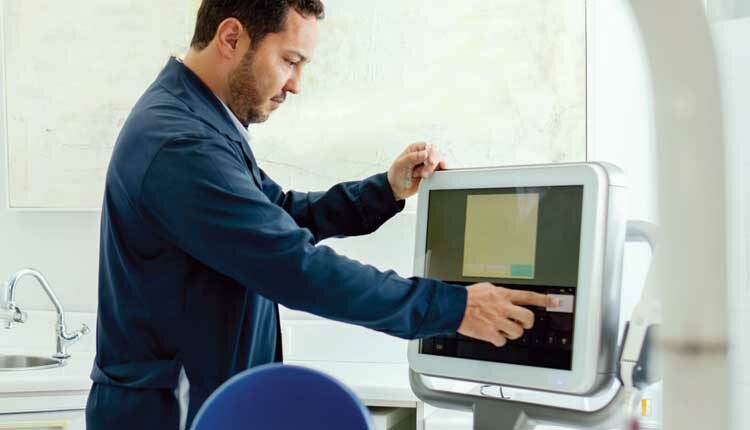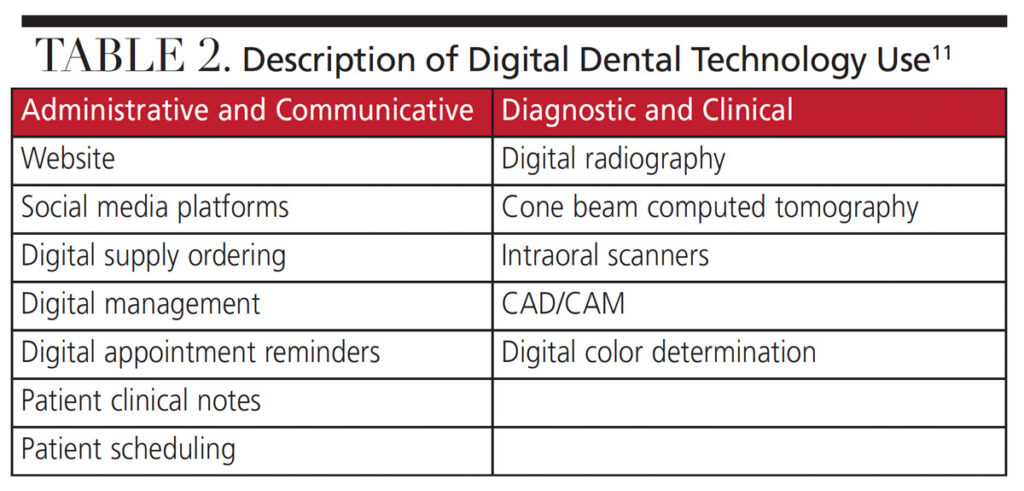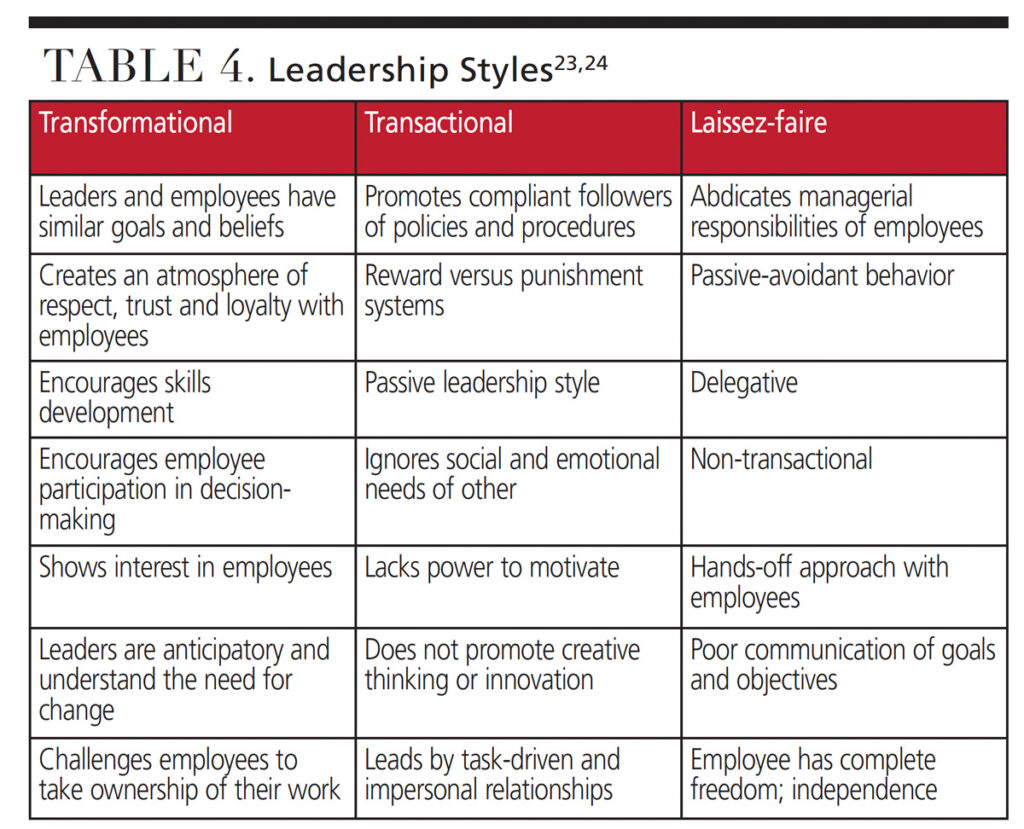 GISELLEFLISSAK/E+/GETTY IMAGES PLUS
GISELLEFLISSAK/E+/GETTY IMAGES PLUS
How Digital Technology Can Mitigate Stress and Burnout
An exploration of how managing technostress while utilizing digital technology may increase productivity and quality of life among dental professionals.
This course was published in the December 2021 issue and expires December 2024. The author has no commercial conflicts of interest to disclose. This 2 credit hour self-study activity is electronically mediated.
EDUCATIONAL OBJECTIVES
After reading this course, the participant should be able to:
- Identify and evaluate factors that may positively or negatively affect stress and burnout when incorporating digital technology into dental practice.
- Explain commonly used digital dental technologies, characteristics of early adopters, and reasons for not embracing these technologies.
- Describe tools used to assess the likelihood of technology adoption by dental teams, as well as the influence of leadership approaches in successful implementation.
As American architect and businessman William McDonough noted, “The Stone Age did not end because humans ran out of stones. It ended because it was time for a rethink about how we live.” This statement accurately reflects the digital explosion that dental and medical providers — in fact, individuals in general — have experienced in recent decades. Dentistry today is in a revolution of technology that demands a healthcare rethink, as clinicians are continually reassessing how patient information is diagnosed and recorded, how workflows can be improved, and how digital technologies can make oral healthcare more accessible and predictable. Which begs the question, does the use of digital technologies increase stress and burnout? Or, if implemented and managed properly, could it actually mitigate stress and prevent burnout?
This article seeks to identify and evaluate factors that may mitigate stress and prevent burnout when incorporating digital technology into dental practice. Emphasis will be placed on the role a defined work culture and effective leadership may play in mitigating stress and burnout.
“Technostress,” a term that entered the workplace in 1984 due to technology use, has been defined as any negative effect on human attitudes, thoughts, behavior and psychology that directly or indirectly results from technology.1 While cross-sectional studies have found associations between technostress and poor mental health, such as depressive symptoms or burnout, epidemiological evidence establishing a causal link is still missing.2
TECHNOLOGY ACCEPTANCE MODEL
One of the biggest challenges with new digital technology in the workplace is trying to predict whether it will be adopted and incorporated, or rejected and become an unwanted business and/or healthcare equipment expense. One tool for analyzing a person’s behavior and potential acceptance is called the Technology Acceptance Model. It is the most influential and widely used model that attempts to identify factors that affect users’ response to technological changes and innovation, while also examining the relationship between the changes in the system and improvements in practical usage.3
The Technology Acceptance Model proposes that the metrics of “perceived usefulness” and “perceived ease of use” determine the “behavior intention to use” (in other words, an individual’s acceptance and adoption of the technology). Research in this area has focused mainly on technological, social and psychological reasons for accepting new technologies.4
Research based on the Unified Theory of Acceptance and Use of Technology Model (which is derived by incorporating eight models and theories),5 has analyzed and evaluated the acceptance and use of new technology in multiple fields, including healthcare. The Unified Theory of Acceptance and Use of Technology Model provide practical tools for managers who must assess the likelihood of successful adoption of new technologies. The researchers used the core concepts of the Big Five Personality Traits, which attempt to estimate the adoption and usage of technology based on various personality types. These five personalities include neuroticism, agreeableness, openness, conscientiousness and extraversion (Table 1).5
It has been argued that the Big Five assessment tool would indicate those who display extraversion, openness and agreeableness have a higher degree of technology acceptance.6 Agreeableness is positively associated with perceived usefulness, while neuroticism is negatively associated with it. Conscientiousness moderates the relationship between perceived usefulness and behavior intention to use.7 Another study showed that extraversion is positively related to behavior intention to use, perceived usefulness and perceived ease of use.8 A positive association is found between conscientiousness and behavior intention to use, while openness has a positive effect on perceived ease of use.9 Openness is significantly related to personal innovation in the use of information systems.9
MORE RESEARCH IS WARRANTED
In dentistry, research is scarce on the relationship between stress and burnout and the adoption of new technology. However, qualitative interviews of Dutch experts revealed those who more readily incorporated technology into their practices tended to be younger and had graduated from dental school more recently; they also worked more hours per week than intermediate or low technology users, and spent more time in professional activities than intermediate technology users. In addition, they saw less patients per year than low technology users, employed more people than low technology users, and had more dentists working in the practice than low and intermediate technology users.10
In a follow-up survey of Dutch dentists, almost all respondents used some form of the 12 digital administrative and clinical technologies listed, with positive responses ranging from 93.2% to 6.8%. With the exception of digital intraoral radiography, administrative and communication technologies were used more often than diagnostic and clinical technologies, (Table 2).11
The average dentist in the study used an average of 6.3+/-2.3 digital technologies. The study divided the users into three groups: low, intermediate, and high users of technology. The low technology user, who represented 22.5% of the survey respondents, used zero to four technologies. The intermediate technology user, who represented 46.2% of the survey respondents, used five to seven technologies. The high technology user, who represented 31.3% of the survey respondents, used eight to 12 technologies.11 The high technology users more frequently were specialists, had higher average number of patients per year, and worked in multi-dentist practices with more staff. Additionally, they invested more hours per year in professional activities than intermediate technology users.11
Another study revealed that perception of the benefits or utility was the most common facilitating factor behind the purchase of digital technologies, followed by ease of use. Continuing education and support, along with a community of instructors and staff, were also key factors.12,13
Dentists who did not purchase such technologies described several limiting factors, including design issues, technical concerns, lack of familiarity with information and communication technologies, and insufficient time to incorporate the technology — all of which could generate intraoffice conflict and stress.12 Another report suggests that factors that tend to move people away from accepting and using new technology include negative perceptions of investment costs (initial and ongoing), usefulness, and ease of use (Table 3).10
A recent report indicated that dental students were motivated to use digital technology if they had good knowledge of it, knew that other dentists were using or endorsing it, and if students perceived they would have control of technology applications in their future practice.14
WORK CULTURE AND LEADERSHIP
Work culture is a critical element in today’s dental workspace. Lack of a defined culture can create chaos and unwanted stressors. Dissatisfaction is a major cause of turnover and can have detrimental costs and effects on an organization. Healthy work cultures do not happen by accident. Research in nursing management shows there are four positive workplace managerial traits: trust and trustworthiness, empowerment, consistency and mentorship.15 To varying degrees, these coexist at all times regardless of the culture in place. Managers must implement support and operational systems (plus other mechanisms) that allow employees to empower themselves and flourish. This increases their own effectiveness, as well as that of the organization, while constructively reducing stress.15 Unresolved stressors can lead to burnout and increased pressure on leadership.
In dentistry, it is important to realize that a healthy culture is created, not assumed. Toward this goal, the dentist must regularly support and use the technology, invest in continuing education for him/herself and staff, and create a community of support and information to increase the team’s satisfaction and knowledge of the technology. The dentist should reinforce that the staff is relevant and making a difference in today’s healthcare, while demonstrating the technology’s practical use to improve care while mitigating workflow obstacles.
Communication technology can contribute to positive or negative outcomes in terms of burnout and stress.16 One study showed the best way to prevent technostress is to minimize negative attitudes and secure the workplace organizational culture by providing managerial and colleague support when implementing new technologies.16 Other studies have shown how technology can help mitigate burnout. For example, better work organization using information technology was associated with employee well-being.17 Similarly, in a study of pharmacy staff, automation of workflows via technological innovation reduced stress.18
Research has also shown that well-being and stress management can be promoted by incorporating an explicit email policy — for example, checking email only at defined times during the day.19 Communication technology can distort the distinction between one’s work and personal life by increasing the risk of work-family conflicts. However, information technology may allow for greater autonomy and flexibility in handling work tasks while balancing personal demands.20,21 Recent research suggests that with appropriate design and implementation, technology can mitigate the negative effects of technostress. With a supportive organizational structure and effective leadership, this could increase office productivity and morale, while simultaneously fostering innovation in the workplace.22
IMPACT ON DENTAL TEAMS
Digital technologies can have positive impacts on workers’ mental well-being when they enable better work organization.2 Leadership styles appear to have a direct effect on burnout and stress levels when instigating new technology. One report using the Full-Range Leadership Theory explored three typical styles of leadership behavior: transformational, transactional and laissez-faire.23 In another study, the same team used the Multifactor Leadership Questionnaire as a validated instrument to measure full-range leadership performance.24
A study in which information technology managers rated management on leadership when introducing new technology evaluated transformational, transactional and laissez-faire leadership styles, and their corresponding relationship to technostress (Table 4).25 The evaluation suggests dentists gravitate toward a transformational leadership style to keep up with the fast-paced and constantly evolving digital dental environment. This research reinforced that transactional and laissez-faire leadership styles may contribute to technostress and workplace chaos.25 The takeaway is that dental offices can prevent, manage, and reduce technostress by incorporating more of a transformational leadership style than transactional or laissez-faire. However, it is important to evaluate the leadership style of supervisors and employees and develop a personalized plan rather than adopting a cookie-cutter leadership approach.25
The results of another study revealed that professional efficacy was significantly related to transformational leadership, while exhaustion and cynicism were associated with a passive-avoidance (or laissez-faire) leadership style.26
Research also shows the size of the support network, as well as the strength and density of the information network, significantly predict employees’ adaptation to new systems.27 These networks may be a source to answer questions, reduce stress and burnout, and deepen workers’ understanding of new systems and technologies.27 The study further suggests that managerial practices that support and enable work-life balance may contribute to better organizational performance.27
A 2016 study specific to dentistry reviewed factors influencing the adoption of new technologies into practice. It revealed the availability of continuing education was more persuasive than marketing efforts (which were generally perceived negatively). Additionally, while research into the literature supporting a given technology was important to clinicians, so was the personal experience of others.28 The literature also shows that patient’s perceptions of digital dental technologies, as well as credible, expert endorsement of the technologies, are influential in whether the dentist considered or purchased the technology.10,28
CONCLUSION
Overall, there is minimal evidence that digital technology actually reduces stress and burnout in the dental office. While further research is needed, healthy work cultures and effective leadership are paramount, as implementing digital technologies has the potential to mitigate stress and increase practice productivity. Conversely, if introduced without proper support, new technologies can exacerbate stress among providers.
Given proper initial and ongoing training of the dental team, well-designed digital workflows may promote job satisfaction if these systems optimize work organization, enable greater flexibility, and increase control and autonomy in the dental workspace.2
REFERENCES
- Chiappetta M. The technostress: definition, symptoms and risk prevention. Senses Sci. 2017;4:358–361.
- Dragano N, Lunau T. Technostress at work and mental health: concepts and research results. Curr Opin Psychiatry. 2020;33:407–413.
- Özbek V, Alnıaçık U, Kocc F, Akkılıçd ME, Kaşe E. The impact of personality on technology acceptance: a study on smart phone users. Procedia – Social Behavioral Sci. 2014;150:541–551.
- Turan H. Determinations of customers’ Internet shopping behavior: empirical test with the theory of planned behavior. Dogus Univ J. 2011;12:128–143.
- Bano S, Shah U, Ali S. Personality and technology: Big five personality traits as descriptors of universal acceptance and usage of technology UTAUT. Library Philosophy and Practice. 2019;1:1–22.
- Keeton KE. An extension of the UTAUT model: How organizational factors and individual differences influence technology acceptance. PhD dissertation; University of Houston. 2008.
- Devaraj S, Easley RF, Crant JM. How does personality matter? Relating the five-factor model to technology acceptance and use. Info Sys Res. 2008;19:93–105.
- Svendsen GB, Johnsen JK, Sorensen LA, Vitterso J. Personality and technology acceptance: The influence of personality factors on the core constructs of the technology acceptance model. Behav Inform Technol. 2013;32:323–334.
- Nov O, Ye C. Personality and Technology Acceptance: Personal Innovativeness in IT, Openness and Resistance to Change. Available at: https://ieeexplore.ieee.org/document/4439153. Accessed November 12, 2021.
- van der Zande MM, Gorter RC, Wismeijer D. Dental practitioners and a digital future: an initial exploration of barriers and incentives to adopting digital technologies. Br Dent J. 2013;215:E21.
- van der Zande MM, Gorter RC, Aartman IH, Wismeijer D. Adoption and use of digital technologies among general dental practitioners in the Netherlands. PLoS ONE. 2015;10:e0120725.
- Gagnon MP, Desmartis M, Labrecque M, et al. Systematic review of factors influencing the adoption of information and communication technologies by healthcare professionals. J Med Sys. 2012:36:241–277.
- Seamless Digital Dentistry. Available at: https://www.dentsplysirona.com/en-us/discover-by-topic/timebarrier.html. Accessed November 12, 2021.
- Sheba M, Comnick C, Elkerdani T, Ashida S, Zeng E, Marchini L. Student’s perception and attitudes about digital dental technology is associated with their intention to use it. J Dent Educ. 2021;
85:1427–1434. - Kane-Urrabazo C. Management’s role in shaping organizational culture. Nurs Manage. 2016;14:157–252.
- Berg-Beckhoff G, Nielsen G, Ladekjær Larsen E. Use of information communication technology and stress, burnout, and mental health in older, middle-aged, and younger workers — results from a systematic review. Int J Occup Environ Health. 2017;23:160–171.
- Hoeven CL, van Zoonen WV. Flexible work designs and employee well‐being: examining the effects of resources and demands. New Technol Work Employ. 2015;30:237–255.
- James KL, Barlow D, Bithell A, et al. The impact of automation on pharmacy staff experience of workplace stressors. Int J Pharm Pract. 2013;21:105–116.
- Kushlev K, Dunn EW. Checking e-mail less frequently reduces stress. Comput Hum Behav. 2015;43:220–228.
- Leung L, Zhang R. Mapping ICT use at home and telecommuting practices: a perspective from work/family border theory. Telematics Informatics. 2017;34:385–396.
- Chesley N. Blurring boundaries?: linking technology use, spillover, individual distress, and family satisfaction. J Marriage Fam. 2005;67:1237–1248.
- Tarafdar M, Cooper CL, Stich J. The technostress trifecta — techno eustress, techno distress and design: Theoretical directions and an agenda for research. Info Sys J. 2019;29:6–42.
- Avolio BJ, Bass B. Full Range Leadership Development. Thousand Oaks, Calif: Sage Publications; 2011.
- Bass BM, Avolio BJ. Transformational Leadership Development: Manual for the Multifactor Leadership Questionnaire. Palo Alto, Calif: Consulting Psychologists Press; 1990.
- Boyer-Davis S. The relationship between technology stress and leadership style: an empirical investigation. J Business Educ Leadership. 2018;8:48–65.
- Hetland H, Sandal GM, Backer Johnsen T. Burnout in the information technology sector: Does leadership matter? European J Work Organizational Psychol. 2007;16:58–75.
- Bruque Camara S, Moyano-Fuentes J, Eisenberg J. Individual adaptation to IT-induced change: the role of social networks. J Manag Inf Syst. 2009;25:177–206.
- Matthews DC, McNeil K, Brillant M, et al. Factors influencing adoption of new technologies into dental practice: a qualitative study. JDR Clin Trans Res. 2016;1:77–85.
From Decisions in Dentistry. December 2021;7(11):32-35.








